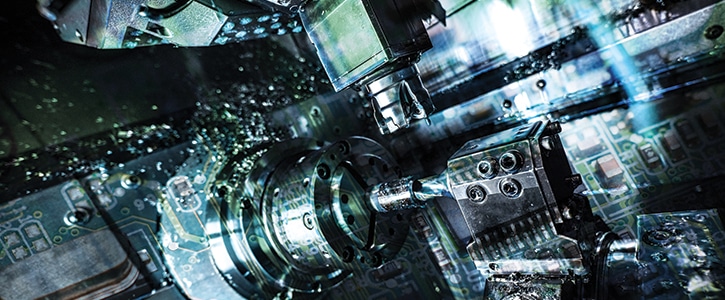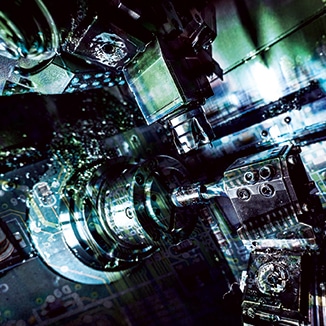
Enterprise Innovation discussed a whitepaper from the World Economic Forum and A.T. Kearney, entitled “Technology and Innovation for the Future of Production: Accelerating Value Creation.” The whitepaper looks into the impact of new technologies on the future of production, and shows how rapid technological change is transforming the production of goods and services across the global economy. For those in manufacturing, it’s time to buckle up; the transformation underway will accelerate exponentially, and we are still in the early stages of the developmental curve.
The research called out three major findings:
- Five production technologies will predominate in the years ahead: the Internet of Things (IoT), artificial intelligence (AI) and advanced analytics, advanced robotics, wearables and augmented reality, and 3-D printing.
- The real power of these technologies comes from their convergence. According to the whitepaper, “understanding and planning for such convergence is the key to unlocking the highest value of future production systems.”
- The future of production is arriving faster than many leaders in business and government realize, and demands the rapid assessment, support, and adoption of appropriate technologies.
Factories Are the Next Fertile Ground for IoT
This report supports an earlier one in which global consultant McKinsey points to factories as “the next fertile ground” for the Internet of Things. Here’s how an article on Fast Company describes that research:
“According to McKinsey’s research, the evolution of manufacturing in the United States, Germany, and Japan will increasingly rely on a combination of in-factory sensors, increased use of analytics and data science, in-factory use of augmented reality such as Google Glass, and drastic increases in how 3-D printing is used for the mass market. The consulting firm estimates that only 40 to 50 percent of equipment in factories will have to be replaced over the next decade, as large multinationals work toward an ideal techie industrial revolution called Industry 4.0. (Heavily promoted by the German government, Industry 4.0 is a buzz term that refers to the integration of sensors into factories. Industry 3.0 was automated manufacturing, Industry 2.0 was the rise of electricity, and Industry 1.0 was the adoption of steam power.”
Convergence and the Digital Thread
The convergence of the IoT, AI,advanced analytics, advanced robotics, wearables, augmented reality, and 3-D printing is incredibly important to the future of manufacturing production. The Kearney research discusses five key ramifications of this point:
- For production sites, converging technologies give rise to a “factory of the future” model in which costs plummet, efficiency increases, and high-quality, quick-turnaround “batches of one” become feasible.
- For firms, this convergence will open new avenues for the creation of customized and connected products, as well as novel business models such as pay-per-performance. To realize the full value of such developments, companies will need to establish new forms of collaboration with suppliers and other partners across the production chain.
- For entire industries, the five technologies will combine to unlock wide-scale efficiencies and a deepened understanding of key customer segments.
- For society, such prospective efficiencies are already generating fierce debate, and will compel governments to make hard choices and tradeoffs. Leaner production systems could well lead to further losses in industrial employment, but could also generate new job opportunities in a range of sectors.
- Finally, for individuals, these shifts in the production cycle will have widely varying consequences. Workers in all sectors will need both technical skills and the ability to augment them as new technologies and business models arise.
Infrastructures Must Support Advanced Production Technologies
While these changes will compel executives to focus on what the convergence of advanced production technologies will mean for their companies, it will also require that infrastructures support the connectivity that this technological convergence demands. This means that companies must have “digital thread” capabilities that extend across their value chains. McKinsey noted that digital manufacturing technologies will allow companies to connect physical assets by this digital thread, enabling a seamless flow of data across the value chain that will link every phase of the product life cycle, from design, sourcing, testing, and production to distribution, use, and service after the sale.
The digital thread represents the sum of all data (i.e., model data, product structure data, metadata, effectual data, and process definition data, including supporting equipment and tools) digitally linked to form a single, contiguous definition of all value-added decisions made during the definition of a product, its configuration, manufacturing, and repair processes, logistics, and operational support. It provides a single reference point for design, engineering, manufacturing, and service, ensuring they act in concert.
Enterprises are facing increased pressure to change and adapt to the digitization of manufacturing. In order to establish sustainable change in the digital enterprise, adaptation means even more communication and collaboration among cross-functional teams. Put simply, as manufacturers look to the future of production, the digital thread is what binds them to that future.






